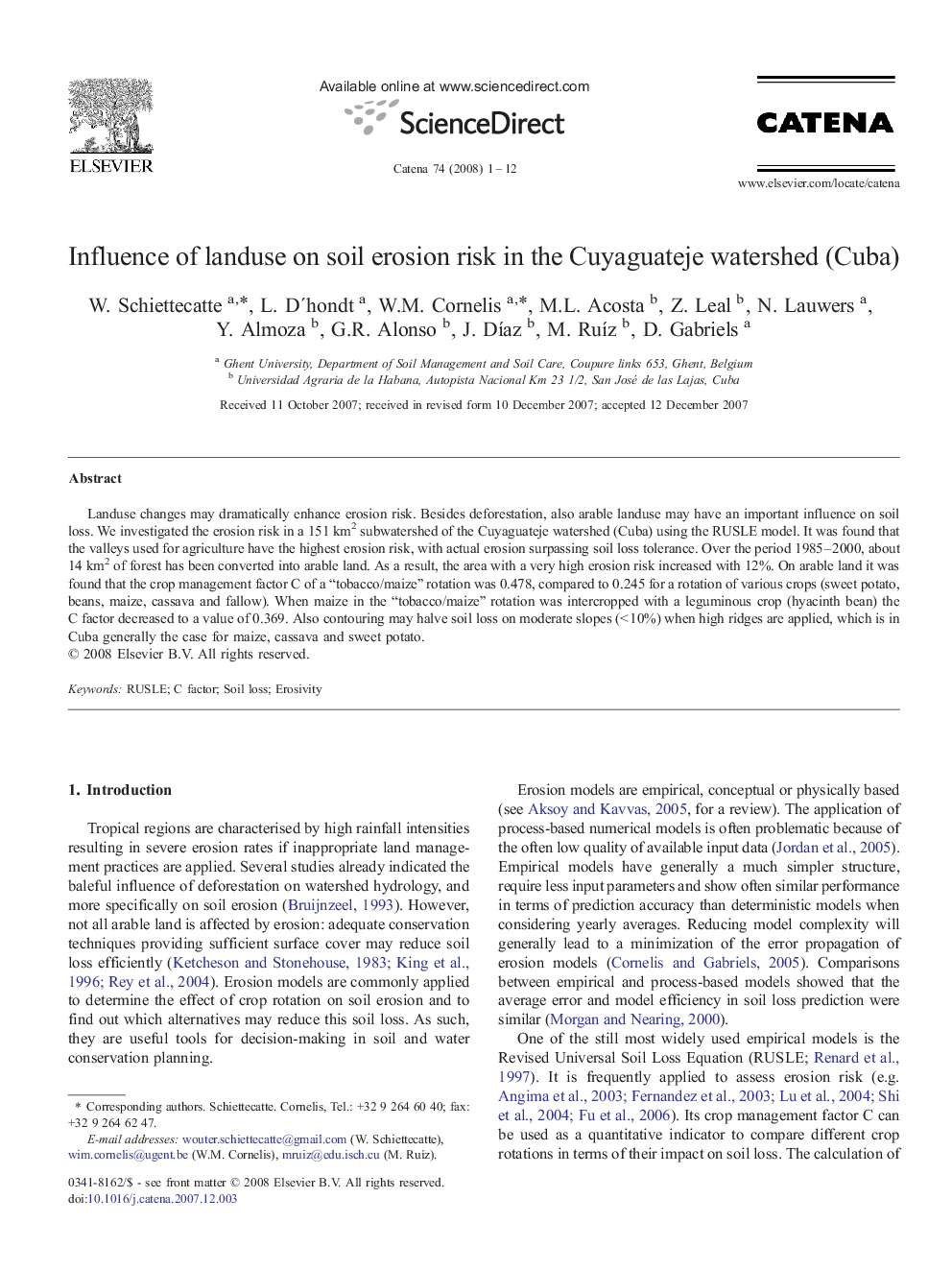| Article ID | Journal | Published Year | Pages | File Type |
|---|---|---|---|---|
| 4572398 | CATENA | 2008 | 12 Pages |
Landuse changes may dramatically enhance erosion risk. Besides deforestation, also arable landuse may have an important influence on soil loss. We investigated the erosion risk in a 151 km2 subwatershed of the Cuyaguateje watershed (Cuba) using the RUSLE model. It was found that the valleys used for agriculture have the highest erosion risk, with actual erosion surpassing soil loss tolerance. Over the period 1985–2000, about 14 km2 of forest has been converted into arable land. As a result, the area with a very high erosion risk increased with 12%. On arable land it was found that the crop management factor C of a “tobacco/maize” rotation was 0.478, compared to 0.245 for a rotation of various crops (sweet potato, beans, maize, cassava and fallow). When maize in the “tobacco/maize” rotation was intercropped with a leguminous crop (hyacinth bean) the C factor decreased to a value of 0.369. Also contouring may halve soil loss on moderate slopes (< 10%) when high ridges are applied, which is in Cuba generally the case for maize, cassava and sweet potato.
